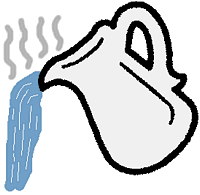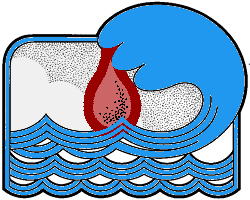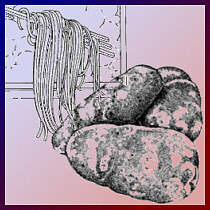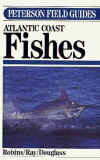Diving Myths
From way back when in 1996 ...


by Dr. Jolie Bookspan, author of Diving Physiology in Plain English
Myth 1 - The Dive Reflex Protects You

In the dive reflex, heart rate and limb blood flow decrease. Careful science ( that means we didn't accidentally step on the thermisters ) shows time and again that the dive reflex does not reduce the need for oxygen underwater as it does in marine mammals. Field studies ( where you're allowed to step on the thermisters ) indicate that the dive reflex does not extend breath-holding time. Occasional cases of human survival after very cold water near-drowning are not due to the dive reflex. Cold is the likely mechanism behind the reduced metabolism that permits survival.
Decreased heart rate from the dive reflex does not reduce metabolism or the oxygen demands of the body's vital organs. The lowered heart rate and sometimes abnormal heart rhythms resulting from the dive reflex may contribute to blackout underwater, not save you from it. The medical term for this is death, which ends these personal dive reflex experiences prematurely. What good is the dive reflex in human divers? The blood vessel constriction in the limbs reduces heat loss.
Myth 2 - Sports drinks DEHYDRATE you

A persistent rumor among divers is that sports drinks and juices dehydrate you, and must be diluted or taken in small quantities. Commercial electrolyte and carbohydrate sports drinks are not harmful to divers.
Exercise studies are clear that sports drinks promote rehydration by helping you absorb and retain water. They stimulate your thirst mechanism to keep you drinking and replace needed water. The net effect is more, not less fluid. However if you drink only water your body helpfully responds by having you 'pee' out the water, as there are not enough electrolytes to help absorb and 'hold' the water. The first commercial drink to solve the electrolyte and fluid replacement need was developed at the University of Florida, and named Gatorade(R) for their Gators' mascot. Now, what about the rumors?
Salty Drinks. First to be dispelled is the scientific-sounding but false statement that these drinks pull water from the body into the intestine to exactly balance the amount of salt and other electrolytes in a highly concentrated, or hypertonic solution. First, sports drinks are not hypertonic. They are similar in concentration, or isotonic, to your body fluids. Your body also maintains a 1.3 to 2.6 gallon (5-10 liter) circulating reserve of water, salivary, gastric, biliary, pancreatic, and intestinal fluids that mix, change the chemical attributes, and dilute your food and drink. Numerous studies of exercise in the heat show that people prefer the taste of a salty drink and wind up drinking more. Extra salt stimulates a type of thirst called osmotic thirst, which is different from 'hypovolemic' thirst when you are low on water. It then makes you retain the water you drink with meals. The small amount of salt in these drinks stimulates your thirst mechanism to keep you drinking. helps retain water, and furthermore, salt is well known to help you retain water. Some 'salt-sensitive' people with high blood pressure are told to restrict salt to allow them to lose the extra water that salt retains. The net effect of all of this is to gain, not lose fluid.
Sweet Drinks. Statements that high sugar content pulls water out of the body into the intestine can also be put to rest. On one hand, it is a physiologic principle that fluids are drawn across certain body membranes into other fluid compartments with higher particle amounts. That's called osmosis. However, it does not apply to sweet things in your intestine. Sugar is not osmotically active in the intestine, in other words, it is unable to draw water out of your body into the gut. The misunderstanding may have gotten its start in hospital settings. In cases where a patient needs to reduce unhealthy body fluid levels, solutions of 50% sugar like sorbitol or mannitol are injected directly into a vein. These sugars are not absorbed by cells. The extreme and sudden blood concentration, as with seawater, makes you 'pee' out body water to try to normalize things. Sports drinks usually range only 6-10% sugar and are not injected. The sugar content in sports drinks allows more water absorption through the intestine than from a solution just of salts in equal in concentration to your body. In other words, the sugar aids water absorption, replacing needed water. The sugar in sports drinks is also absorbed by your cells, allowing cells to draw water osmotically along with it. The net effect is more, not less fluid.
Another popular misconception among divers is that sports drinks must be diluted or taken in small quantities. Dr. Robert Murray, Director of the Gatorade Exercise Physiology Laboratory, points out that diluting the drinks lessens their effectiveness. The drinks are also designed to be taken in large volumes for rehydration. Since diving is rarely a maximal athletic endurance event, if you don't like the taste full-strength, it makes little difference to dilute. The importance is to replace fluids and electrolytes during long exercise.
Myth 3 - Pouring warm water in your dive suit makes you colder

On the whole, pouring warm water in your drysuit would enjoy a spectacular lack of success. On the other hand, (arm, leg) with wet suits it helps. Adding warm water to your wet suit is the principle behind hot water suits used commercially. You will not overheat or begin to vasodilate or sweat. That would occur only past a certain heat load that could not be reached from a few cups of warm fluid. The small heat load gained is that much more in the BTU bank for later when you're back in the water spending heat or trying to warm up between or after diving.
Myth 4 - You ALWAYS get colder by exercising in the water

In some cases, physical exertion in cold water intensifies cooling. But not all cases. Exercise in cold water can generate enough heat to match or surpass the heat you lose, depending on water temperature in some work, and in other work regardless of temperature. Arm and leg exercise prevents a fall in core temperature benefiting individuals with a low shivering response. Exercise prevents core heat loss particularly in fatter subjects again demonstrating the benefit of body fat in keeping warm. It is noteworthy that these studies are all of subjects exercising in cold water with no protective garments. Divers wearing exposure suits are more likely to benefit from the heat generation of exercise.
It is also possible to overheat, as swimmers doing laps in warm pools and divers sweating into their masks can tell you. A recent Navy study looked at over-insulated divers swimming in cold water and found they needed a bit of heat extraction to prevent overheating.
Myth 5 - Your blood has the same composition as sea water

Contrary to popular belief, your blood is not similar in composition to seawater; blood is several times more dilute. If it were like seawater, you could safely drink seawater, which is not the case. Sea-going birds such as penguins, seagulls, and albatross can drink seawater. Special glands in their heads excrete excess salt. Humans have no salt glands. In humans, kidneys do the main work of regulating body salt levels.
If you drank seawater, you would have to get rid of the extra salt because it is just too much for your system. Your kidneys would draw water from your body's supply to dilute the salt to get rid of it, a process so dehydrating that you could die of thirst faster by drinking only seawater than if you didn't drink anything at all. Human inability to drink seawater for fluid replacement is reflected in Samuel Taylor Coleridge's ballad Rime of the Ancient Mariner Q "Water, water everywhere, nor any drop to drink."
Myth 6 - Women are more susceptible to hypothermia than men

There is no convincing evidence that women are more susceptible to hypothermia than men, as commonly stated by divers. To the contrary, several studies show women may be less susceptible. Women may generate less (and sometimes more) total heat than men depending on workload, fitness, body size, and other variables, and have greater ability, on average, to limit heat loss. Men, on average, usually lose more total heat from higher skin temperatures due to their lesser vasoconstrictor response (hence warmer hands), and from their larger total skin surface area, and for that reason, must counter with increased heat production from typically greater mass and metabolism. It takes more calories and metabolic work to keep up such heat production, making a very extreme survival situation more problematic for males - they may be more likely to starve and freeze. Evidence is strong that women protect their core temperature in the cold as well or more than men.
What about the warmer hands issue? That doesn't mean that men fare better in the cold. It indicates that women are losing less heat through their periphery. Men's warm hands pour heat out into the environment. Your skin temperature is not 98.6°F (37°C). That familiar number is the average temperature of your core. Skin temperature is far cooler than core temperature. One of the ways your body resists heat loss through your periphery is by reducing warm blood flowing to your skin surface. In the cold, your skin temperature quickly drops to that of (or close to) the surrounding air or water. If skin surface temperature is close to the surrounding temperature, the gradient is small, so heat loss is small. (Heat travels down gradients from high to low, just as with nitrogen load.)
People with cooler skin in the cold have a smaller skin-to-environment gradient to lose heat. An analogy is if you stand outside your house in cold weather, touch the exterior wall and find it warm, you would notice the expensive loss of heat and know your home needed better insulation. You may even wonder who designed such an inefficient structure.
The term surface area to mass ratio is thrown around a lot when cold exposure is mentioned. Like the term 'thermal coefficient' which can mean just about any number, the phrase 'surface area to mass ratio' has a high dazzle value. It sounds intellectual enough to invest the speaker with instant thermal authority. Equivalent oral footwork occurs when yet another military jet impacts unfavorably (crashes) and energetically disassembles (explodes) causing the pilot to have an unfavorable shift in health status of high magnitude (die), but they'll take the problem under consideration (just as soon as hell assumes a negative thermal coefficient).
Now, what does surface area to mass ratio mean? It's the amount of surface that can lose heat compared to the internal mass that holds and, in animals, generates heat. Car and home heat redistributors are built to have long thin shapes so their high surface area to mass ratio gives off, or radiates, lots of heat. Imaginatively, they are called radiators.

Spaghetti cools rapidly. Baked potatoes stay hot. Like spaghetti, your fingers and ears are relatively long and thin with much exposed surface. Fingers and ears chill faster than your torso. Your torso, very much like a potato, has relatively high internal mass compared to its outer surface of skin giving it a lower surface area to mass ratio. Even though fingers have less total surface than your body they have a higher ratio, and more capacity to radiate heat.
Do women have a larger surface area to mass ratio than men putting them at greater risk of hypothermia? The ratio is not the main determinant of chilling, it is much less important underwater than above, and it is only one star in a constellation of temperature-regulating mechanisms. The ratio is also not determined by gender.
A tall thin man's ratio often exceeds that of a shorter heavy woman. Short thin men have a high ratio compared to large men. A large man will also lose more total heat from his larger skin surface area than a smaller man or woman. If a given woman has a higher ratio than a man, like all warm-blooded creatures women have more than one protective mechanism against cold. No single heat loss pathway creates a global risk of hypothermia.
The ratio becomes an interesting player in the heat where lower ratio people have an odd habit of overheating more than larger ratio people. That is for another article on heat. When is the ratio a serious player in the cold? In fingers and ears compared to bodies. In jockeys compared to linebackers. In children compared to adults. Otherwise, the ratio matters, just not at all as much as you've heard.
The statement that women have more curves than men and therefore increased surface area to mass ratio to lose heat and consequently higher susceptibility to chilling should be taken with a millimole of NaCl. For one thing, curves don't always increase the ratio. As moderate math can show, both the surface area and the mass increase with curves. The ratio could stay the same or change in either direction. A sphere, for instance, can have a lower surface-to-mass ratio than a cylinder. Then too, men's bodies are full of curves, from muscles to other normal structures. Men's genitals don't fare well in the cold for similar reasons as fingers and ears. Here is where the surface area to mass ratio comes home to the, ahem, heart. 'Frostbite Shorts', under various names, is a documented medical malady.
Moreover, thermal influence about another male consideration, namely fertility, was known anecdotally for centuries. The, dare I say it, seminal work in this area was conducted on pearl diving men of the South Seas. Their fertility dived after cold water excursions for two cool reasons.
More information can be found in the book Diving Physiology in Plain English, by Dr. Jolie Bookspan, which covers decompression theory, tables, computers, effects of immersion, DCS, O2 toxicity, lung injuries, heat and cold, swimmer's ear, marine stings, exercise and nutrition, headaches, why you have to 'pee' when you get in the water, and many other topics.
To purchase the book, contact the Undersea and Hyperbaric Medical Society
Original NJScuba website by Tracy Baker Wagner 1994-1996

